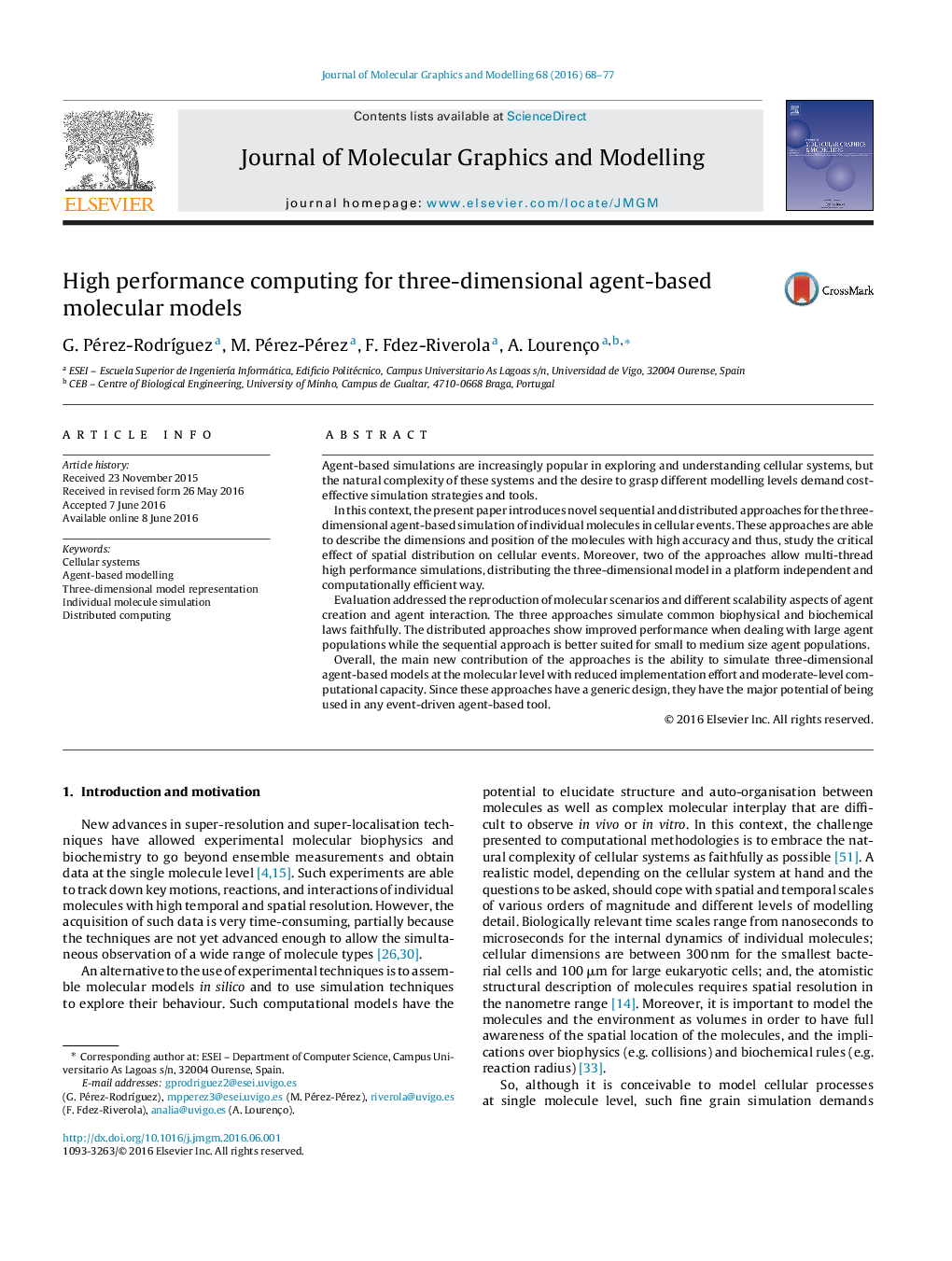| کد مقاله | کد نشریه | سال انتشار | مقاله انگلیسی | نسخه تمام متن |
|---|---|---|---|---|
| 443220 | 692690 | 2016 | 10 صفحه PDF | دانلود رایگان |
• Agent-based simulations are increasingly popular in exploring and understanding cellular systems.
• Molecular models are computationally demanding but are crucial to study key cellular phenomena such as molecular crowding.
• The proposed agent-based approaches contribute to high performance three-dimensional molecular simulation.
• Our approaches may be implemented in typical Life Sciences research centres and do not require specialised computing skills.
• Our approaches may be applied to any model at molecular level and have the potential of being used in any agent-based tool.
Agent-based simulations are increasingly popular in exploring and understanding cellular systems, but the natural complexity of these systems and the desire to grasp different modelling levels demand cost-effective simulation strategies and tools.In this context, the present paper introduces novel sequential and distributed approaches for the three-dimensional agent-based simulation of individual molecules in cellular events. These approaches are able to describe the dimensions and position of the molecules with high accuracy and thus, study the critical effect of spatial distribution on cellular events. Moreover, two of the approaches allow multi-thread high performance simulations, distributing the three-dimensional model in a platform independent and computationally efficient way.Evaluation addressed the reproduction of molecular scenarios and different scalability aspects of agent creation and agent interaction. The three approaches simulate common biophysical and biochemical laws faithfully. The distributed approaches show improved performance when dealing with large agent populations while the sequential approach is better suited for small to medium size agent populations.Overall, the main new contribution of the approaches is the ability to simulate three-dimensional agent-based models at the molecular level with reduced implementation effort and moderate-level computational capacity. Since these approaches have a generic design, they have the major potential of being used in any event-driven agent-based tool.
Figure optionsDownload high-quality image (340 K)Download as PowerPoint slide
Journal: Journal of Molecular Graphics and Modelling - Volume 68, July 2016, Pages 68–77
